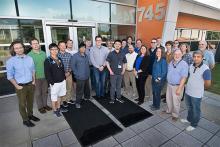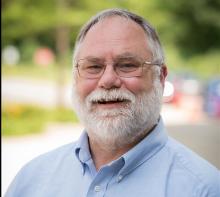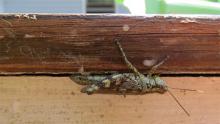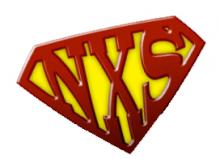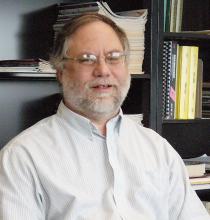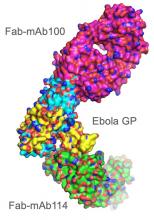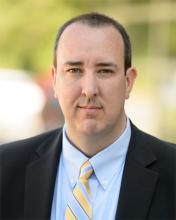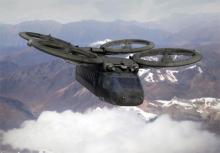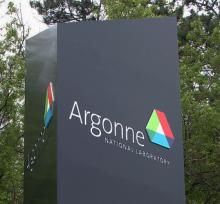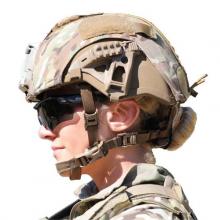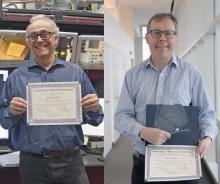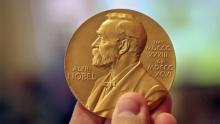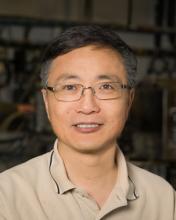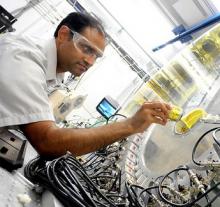News Feed - APS/User News
A potential drug target has been identified in a newly mapped protein of SARS-CoV-2, the virus that causes coronavirus disease 2019 (COVID-19). The structure was solved by a team including the University of Chicago, the U.S. Department of Energy’s Argonne National Laboratory, Northwestern University Feinberg School of Medicine and the University of California, Riverside School of Medicine.
With funding from the DOE for a two-year pilot program, scientists from the five light sources have formed a Data Solution Task Force that will demonstrate, build, and implement software, cyberinfrastructure, and algorithms that address universal needs between all five facilities.
Here's how to contact the APS Users' Executive Committee with any questions/concerns/feedback/ideas/problems.
Mark Beno, a senior chemist at the U.S. Department of Energy’s Argonne National Laboratory, has been posthumously awarded the distinction of Fellow by the American Association for the Advancement of Science for his expertise in chemical crystallography.
The Physical Chemistry Division of the American Chemical Society has announced that Lin X. Chen has received the 2020 Award in Experimental Physical Chemistry. Chen is a senior chemist in the Chemical Sciences and Engineering division of the U.S. Department of Energy’s Argonne National Laboratory, as well as a professor in the Department of Chemistry at Northwestern University.
From the Smithsonian Magazine SMARTNEWS: A team of researchers first stumbled upon their discovery while examining grasshoppers in the [Advanced Photon Source at] Argonne National Laboratory, a device that uses synchrotron X-rays to generate precise, high-quality images and video.
From "Trilobites" in The New York Times, January 13, 2020: Grasshoppers have to deal with blood pressure issues when they are upside down, according to research at the Advanced Photon Source.
The 22nd National School on Neutron and X-ray Scattering will be held on June 13-27, 2020, at the U.S. Department of Energy’s Argonne National Laboratory and Oak Ridge National Laboratory.
Mark Beno joins the more than 400 new 2019 members of the American Association for the Advancement of Science who “have earned the lifetime distinction of AAAS Fellow, in honor of their invaluable contributions to science and technology.” Dr. Beno passed away suddenly on August 24, 2019.
The ability to examine how specific antibodies react with the Ebola virus has led to the development of a promising drug with far higher survival rates. Scientists using specialized beamlines at Argonne’s Structural Biology Center (SBC-XSD), a facility for macromolecular crystallography at the APS, a DOE Office of Science User Facility, can examine molecular structures and interactions that could yield lifesaving medicines for various diseases.
The U.S. Department of Energy (DOE) announced the selection of John Connolly, Deputy Associate Lab Director for Operations of the Photon Sciences Directorate, and Director of the APS Engineering Support Division, for the Oppenheimer Science and Energy Leadership Program (OSELP). Connolly will join the fourth cohort of OSELP, a DOE program to develop the next generation of science and energy leaders.
(From an "Argonne Today" article)
With the use of advanced x-ray diagnostics, scientists have a better understanding of gas turbine combustor inlet conditions, which is critical for the design and development of engines for the next generation of Army aircraft. (U.S. Army CCDC Army Research Laboratory Public Affairs)
The awards recognize outstanding achievement in basic and applied science, exemplary service that has significantly contributed to Argonne fulfilling its missions and attaining its overall goals, and for achievements that significantly exceed normal requirements of an employee’s position, project assignment, and individual situation.
Scientists at the Army Research Laboratory and the U.S. Department of Energy's Argonne National Laboratory are using highly sensitive x-ray machines to study microstructures of the skull that are informing new military helmet designs. To date, it's the most detailed study of the human skull, according to Argonne, so we should expect better helmets to protect the tiny bones, as a result. (Popular Mechanics)
The human skull is extremely complex. To build helmets that protect it well, we need a detailed understanding of its structure and behavior.
The characteristics that truly set haute chocolate apart can be seen at the microscale thanks to pivotal research performed by researchers using the Advanced Photon Source.
Mark Rivers (The University of Chicago/Center for Advanced Radiation Sources) received the International Conference on Accelerator and Large Experimental Physics Control Systems Lifetime Achievement Award, and Andrew Johnson (Advanced Photon Source) was presented with the ICALEPCS Leadership in Mentoring Award.
Congratulations to the new Nobel laureates M. Stanley Whittingham, John Goodenough, and Akira Yoshino! The Department of Energy’s Office of Science is proud to have supported research by Whittingham and Goodenough.
His nomination and election attests to the high regard colleagues have for his scientific activities as he joins a distinguished group of individuals who have been recognized for their outstanding contributions to the fields of mineralogy, crystallography, geochemistry, and petrology.
Scientists are working to understand why and when lithium-ion batteries in phones and other applications lose charge or fail. One of the best tools in this investigation is x-rays from the Department of Energy's advanced light sources.

